
PA12 CF
STIFF AND STRONG INDUSTRIAL PARTS

AVAILABLE COLORS
BigRep's PA12 CF is a strong and resistant engineering-grade filament. Stiff, durable, and with a great surface quality, PA12 CF is suitable for many professional tooling and automotive applications. It is perfect for functional parts production in a variety of industries without the extra need for chemical or mechanical post-processing. Print and use the part right away.
Being compounded with 10% chopped carbon fibers, it's ideal for functional applications usually produced of ABS, such as jigs, fixtures, grippers, or end-of-arm parts. Its high resistance and durability make PA12 CF suitable for daily production usage under long-term stress. Its high strength-to-weight ratio makes PA12 CF a perfect solution for lightweighting end-use parts. A reliable and easy-to-use engineering performance material, BigRep PA12 CF is optimized for large-format 3D printing on BigRep machines.
MADE FOR
![]()


Stiff and Durable
Parts

Industry-Recognized
Performance

High Strength-to-Weight
Ratio

Great Surface
Quality and Haptics
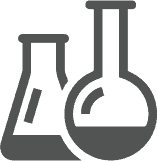
Very Good Chemical
Resistance
What is PA12 CF 3D Printing Filament?
PA12 CF is a high-strength engineering-grade filament with excellent mechanical and chemical properties. The material is primarily composed of Nylon 12 (PA12), a polymer with wide industrial applications (in packaging, food manufacturing, electronics, and more), and has 10% chopped carbon fiber reinforcement. These carbon fibers enhance the material’s stiffness, heat resistance, and durability, creating even more applications for the 3D printing filament in industrial sectors.
Like all of BigRep’s filaments, PA12 CF has been optimized for large-format 3D printing. This material in particular is engineered for the BigRep PRO, but it can also be used with open material fused filament fabrication (FFF) systems suitable for 2.85 mm filament. The material’s primary properties, which we’ll dive into in more detail, are high strength, durability, stiffness, and excellent surface quality—right off the 3D printer.
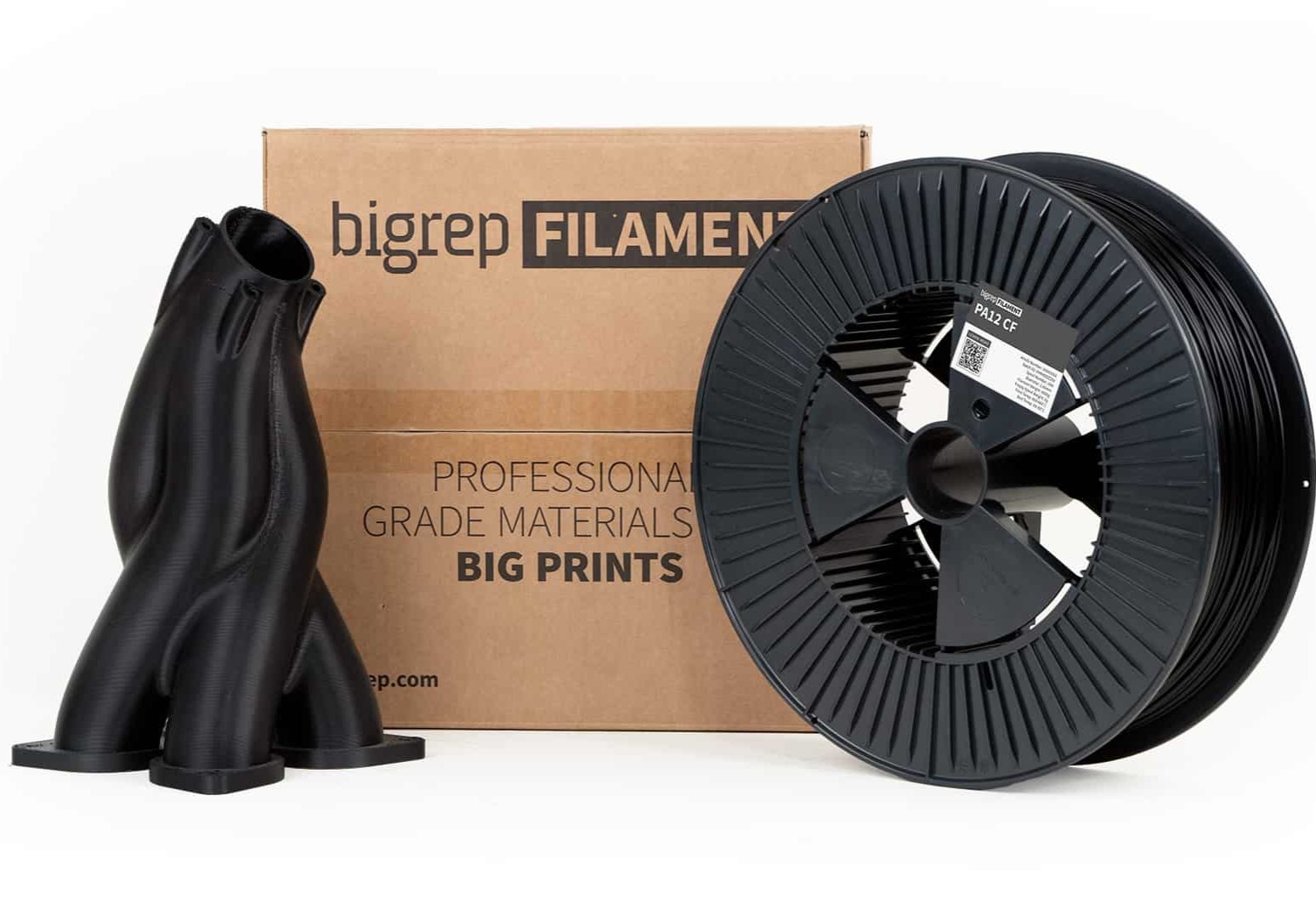
Why Use BigRep PA12 CF Filament?
The combination of high strength and durability make PA12 CF an excellent candidate for a range of functional applications. The BigRep 3D printing material is commonly used in the production of industrial tooling, such as molds, jigs and fixtures, as well as grippers and robotic end-of-arm attachments. This is because PA12 CF parts can withstand the stresses of an industrial manufacturing environment and be used reliably in combination with other machinery and industrial processes.
In addition to tooling, PA12 CF has end-use applications in various industries, such as automotive, electronics, engineering, and more. With a high strength-to-weight ratio and long-term durability, the Nylon-based filament is also a popular option for metal replacement applications. Compared to printed metals, PA12 CF is more affordable and more lightweight.
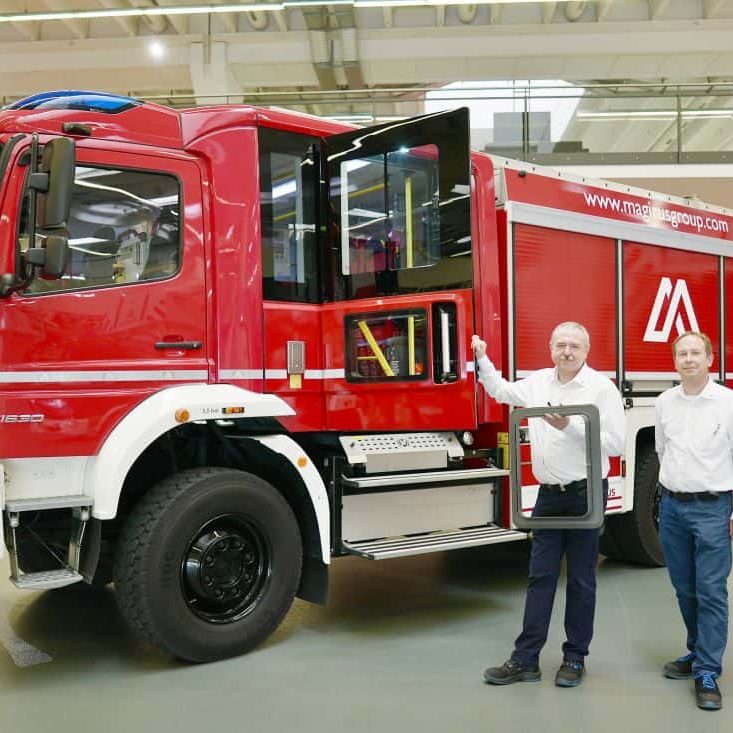
End Use Parts
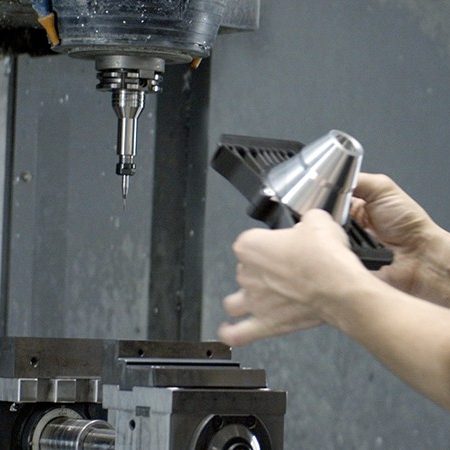
Factory Tooling
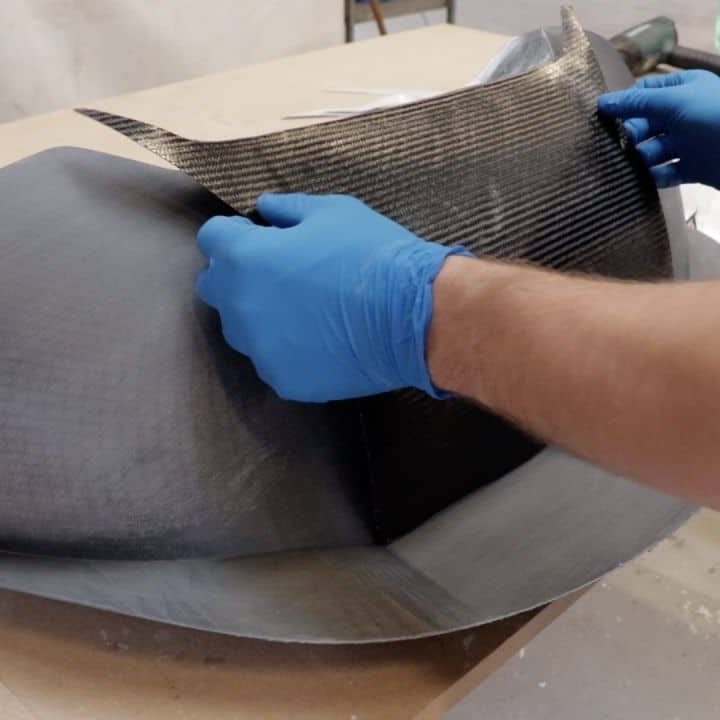
Carbon Fiber Molding
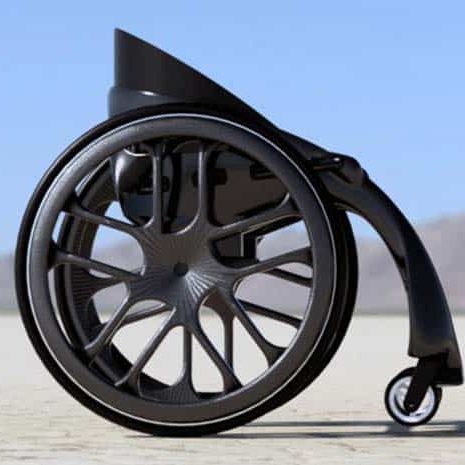
Functional Prototypes
Benefits of 3D Printing BigRep PA12 CF
When it comes to 3D printing PA12 CF filament, one of the biggest benefits to users is that it is easy to work with and requires minimal post-processing. Right off the 3D printer, the material is characterized by a smooth surface finish, minimizing or even eliminating the need for additional chemical or mechanical post-processing. This has a huge benefit: you can save enormous time and resources by being able to use a printed component straight off the build platform.
In the printing process itself, PA12 CF also has certain advantages. For one, the carbon fibers embedded in the Nylon 12 matrix reduce warping on the print bed, which makes for a more reliable printing process and can even enable more complex part geometries. You can achieve the best print results by using an appropriate print bed surface, such as the BigRep SWITCHPLATE on the BigRep PRO.
In order to unlock the most benefits from BigRep PA12 CF filament and maximize the material’s properties, it’s important to use the right combination of print settings.
Recommended print settings
- Nozzle temperature: 270 - 300 °C
- Print Bed Temperature: 40 - 60 °C
- Chamber Temperature: n/a
- Print Speed: 30 - 60 mm/s
What to Look Out for When 3D Printing BigRep PA12 CF
As with other carbon fiber reinforced filaments, it’s important to update your 3D printer hardware when working with PA12 CF. The fibers make for an abrasive filament that can quickly wear down printer nozzles made from brass. It’s therefore recommended to use a wear-resistant nozzle, such as a hardened steel nozzle, which can print PA12 CF without succumbing to rapid wear. Compared to BigRep’s other carbon fiber filament HI-TEMP CF, PA12 CF also has more demanding hardware requirements, particularly when it comes to nozzle temperature.
Carbon fiber reinforced filaments such as PA12 CF, while being stiffer than neat filaments, also tend to be more brittle. To account for this, you can orient parts strategically on the build platform to ensure that the part is strongest in the direction of stresses and loads. Finally, if you do plan to post-process PA12 CF parts, the material is compatible with a wide range of processes, including sanding, drilling, and milling, as well as coatings like fillers, paints, and epoxies. When post-processing, be sure to wear suitable protection, like safety glasses, gloves, and a dust mask.
Best Practices for Storing and Handling BigRep PA12 CF
To maximize PA12 CF’s resilient properties and final print quality, users should follow proper storage and handling guidelines for the material. The first thing to know is that PA12 CF is a highly hygroscopic material, meaning it easily absorbs moisture from the air. If the filament is stored in a humid environment, the material quality can degrade, and moisture in the filament can cause printing issues, like stringing.
To avoid any moisture-related problems, BigRep advises storing PA12 CF filament spools in a dry environment, such as the BigRep SHIELD or BigRep Keep Dry Box. This is particularly important once the spools have been opened. You can also dry your PA12 CF filament before printing at 80°C for 6 to 8 hours.
In terms of handling, the material requires very high printing temperatures, so users should take necessary precautions and avoid touching the printer nozzle or melted filament. Additionally, good ventilation in the printing environment is recommended (as with all filaments), and personal protection equipment should be worn when performing any post-processing.
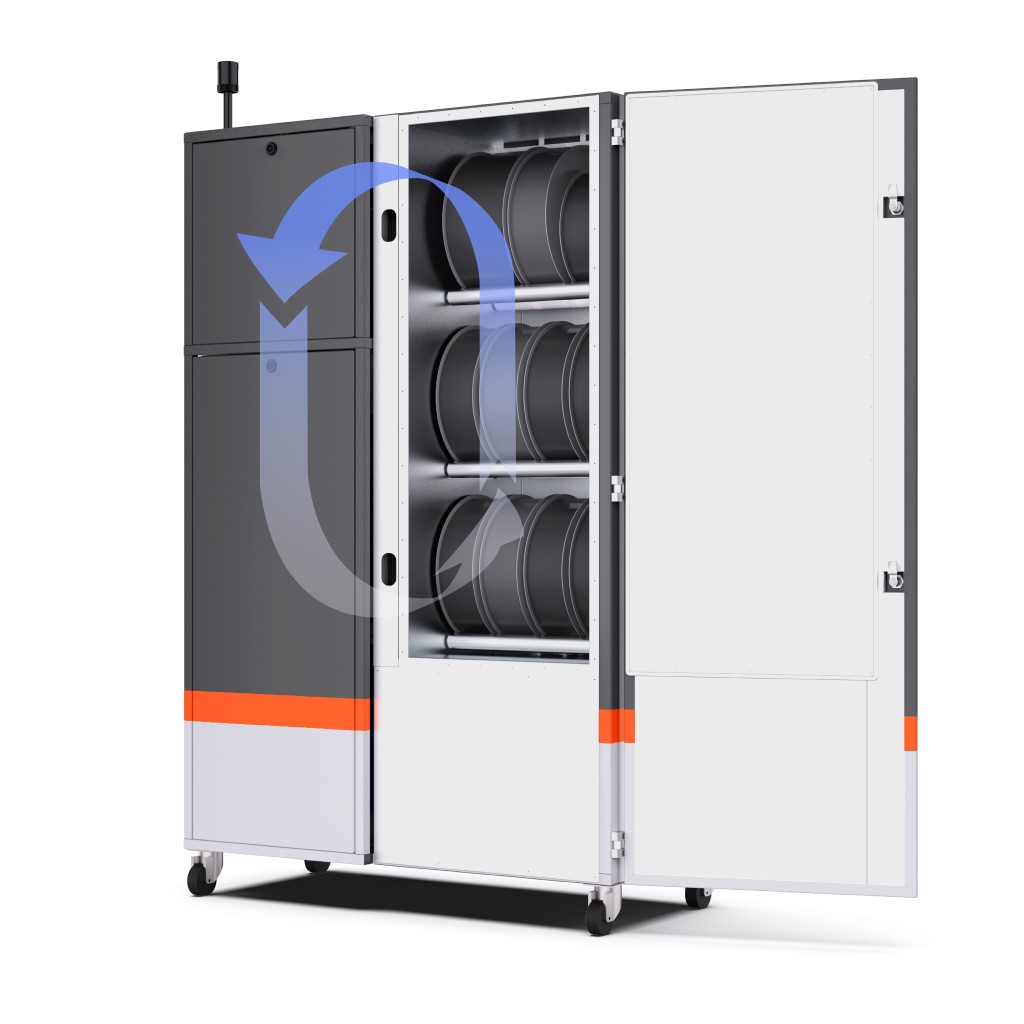
Use Cases: Recommended Applications for BigRep PA12 CF
Within BigRep’s extensive filament portfolio, PA12 CF stands out with its highest strength. This, in addition to its excellent chemical resistance, makes the filament a good match for a broad range of industrial applications, including molds that can undergo multiple production rounds, jigs and fixtures, and various end-use components.
Along with BigRep’s other carbon fiber filament, HI-TEMP CF, PA12 CF has been of interest within demanding industries like aerospace and automotive, as well as in manufacturing, where custom tools that must withstand the pace and pressures of industrial processes are needed.
In the automotive sector, PA12 CF is ideal for the production of large-format end-use parts. Using the BigRep PRO platform, automotive manufacturers can benefit from the material’s excellent resolution and surface finish, cutting back significantly on time and money spent on post-processing—especially compared to near-net composite parts. The material’s excellent strength-to-weight ratio is also appealing to automotive adopters, who can increase a vehicle’s fuel efficiency by cutting down on weight without compromising on durability and performance.
Another notable use case for PA12 CF is carbon fiber molding. PA12 CF is engineered to withstand various chemicals and pressures, such as those present during certain molding processes. The filament can, therefore, be used to produce large and complex cure tools, which are then laminated with prepregs and placed in an autoclave to cure. Printing the mold directly can eliminate the need for a master pattern, resulting in a more streamlined carbon fiber production process.
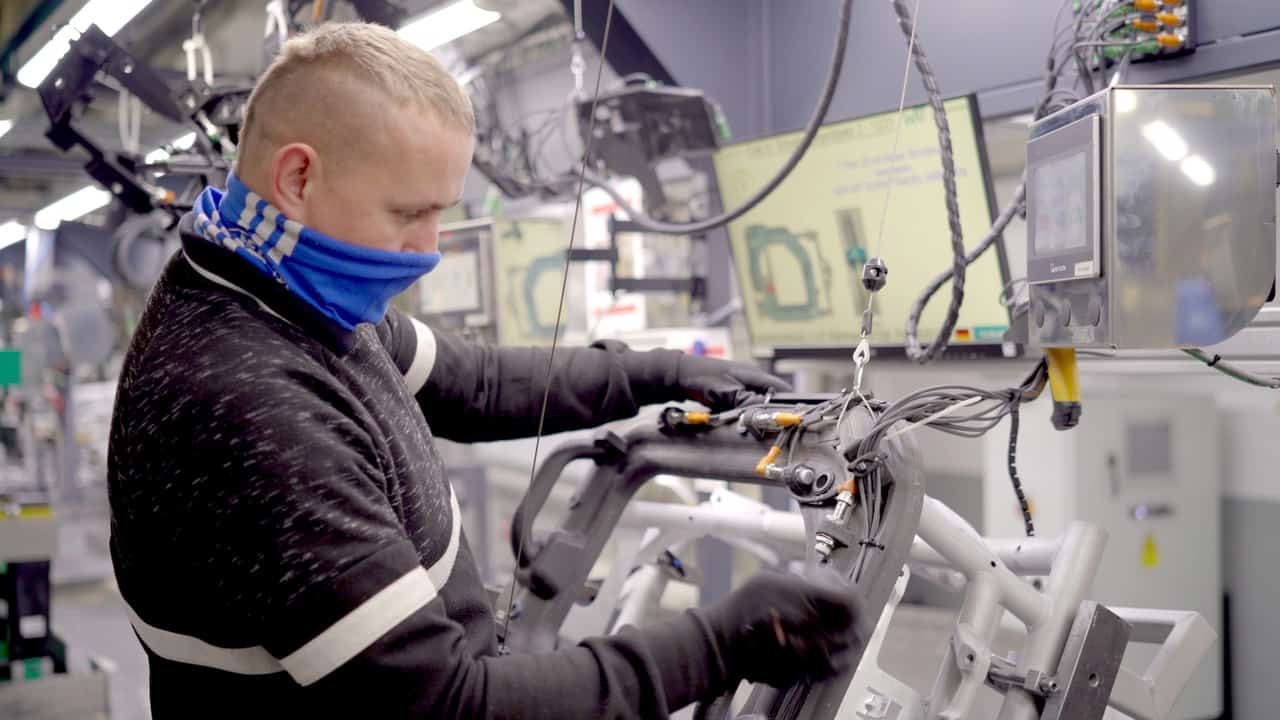
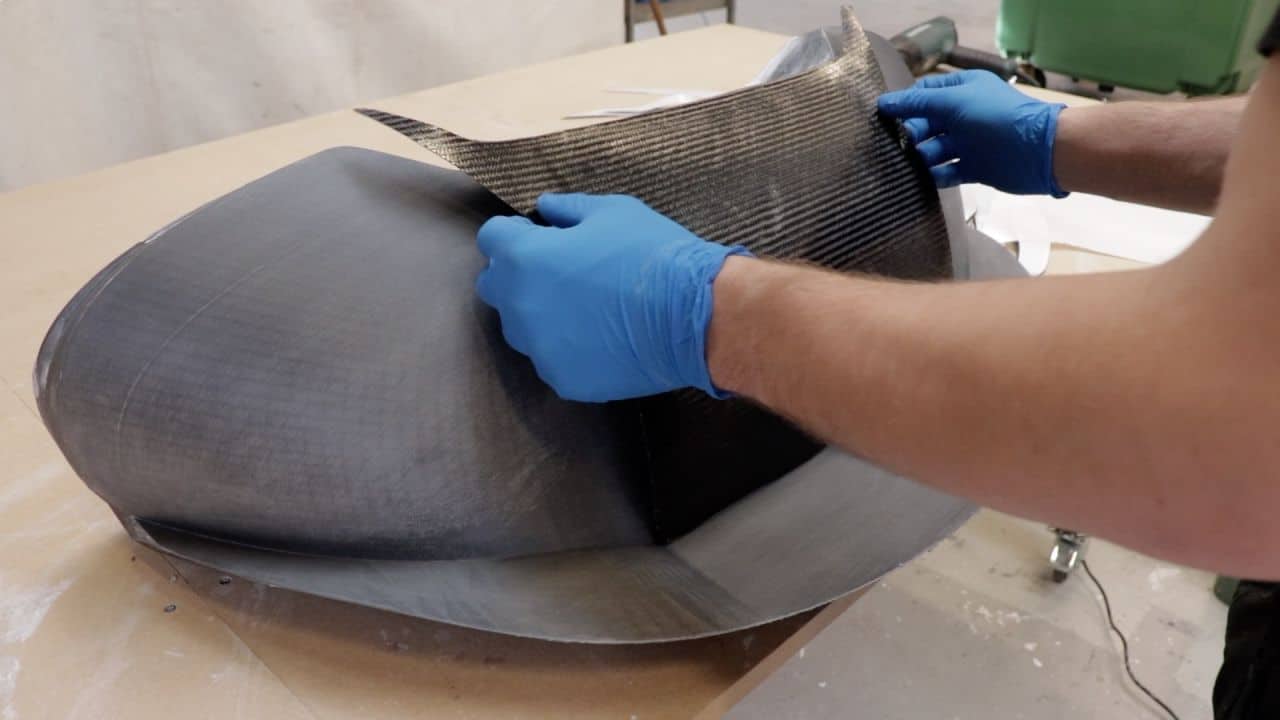
Material properties:
| Material: | Polyamide 12 Carbon Fiber |
| Filament Sizes: | 5.0 kg |
| Diameter: | 2.85 mm |
| Density: | 1.06 g/cm³ |
| Flexural Modulus (ISO 178): | 3500 MPa |
| Tensile Strength (ISO 527): | 71 MPa |
| Impact Strength, notched (ISO 179): | 12.5 kJ/m² |
Recommended printing conditions:
| Nozzle Temperature: | 270 - 300 °C |
| Print Bed Temperature: | >40-60 °C |
| Environmental Temperature: | n.a. |
| Printing Speed: | > 30-60mm/s |
